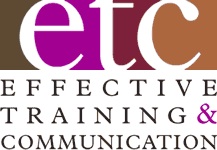Looks like last month’s piece on handling audience questions generated a lot of interest, especially about the two smart alternatives I indicated would be in this month’s issue of ‘Communicate Confidently!’ So … here you go.
As discussed, choosing which audience question strategy to use – questions anytime or only at the end – is not easy because neither one works best for all presenters, all messages and all audiences. But here are two Smart Alternatives for this dilemma, … two hybrid strategies that involve the best features of both approaches.
1. Questions before the summary
Because the audience remembers most what they hear last, here’s how to deal with the disadvantages of holding questions until the end while still maintaining audience control and time management:
- Indicate in your introduction that there’ll be plenty of time for their questions at the end of your presentation.
- After you wrap up your last Sub-Point, pause and indicate that it’s time for questions.
- Answer them as needed, indicating when there’s time for one or two more. You timed your Summary, so you know how much time to allow and still end on time.
- Pause briefly, then segue into your Summary with a brief transitional phrase.
In so doing, you still end with your well planned and practiced summary, not the answer to the last question someone asked.
2. Questions after each Sub-Point
You can also accomplish similar results by inviting questions after each of your three or four Sub-Points. Simply indicate in your Introduction that you’ll invite questions throughout the presentation. This strategy is especially effective with a team-delivered message. Each presenter invites questions at the end of his or her part and then transitions to the next speaker.
This approach is more audience-centric because they don’t have to wait until the end of the entire presentation to ask questions about Sub-Point A or B. It also requires effective time management and audience control. And you still end the entire presentation with your powerful Summary.
While neither of these ‘Best-in-Class’ hybrid strategies will eliminate audience members from interrupting, asking a question whenever they want to or behaving badly, both are effective tools well worth adding to your Presenter Tool Kit.
Next time, we’ll move from ‘when to take questions’ to ‘how to handle them’ – what to say and not say to maximize your hard-won image of confidence, credibility and competence.


2 Comments
Very good article. I absolutely love this site. Keep it up!
I love it too, thanks.